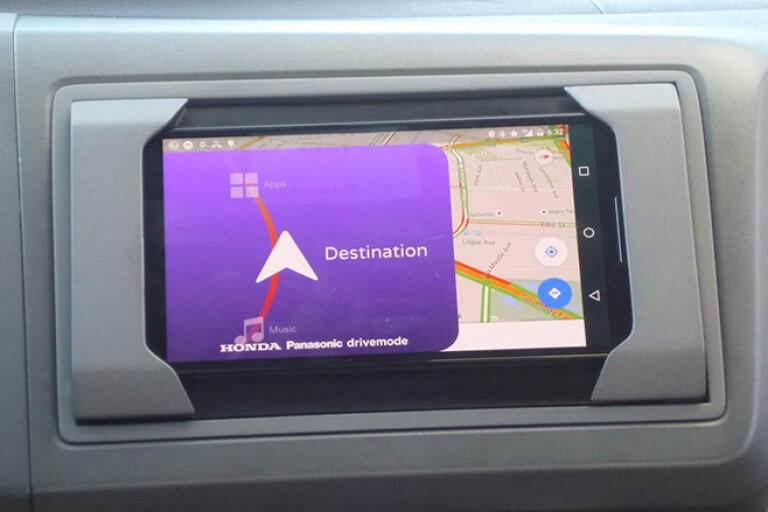.jpg )
Unless one is determined to turn a car over within one or two years, you can guarantee your multifunction entertainment system will be antiquated by the time you move it on.
Smartphones, on the other hand, get turned over very quickly – typically less than two years – and that’s if you don’t bend them, bust them, or accidentally bathe them.
So equipping a car with a cutting-edge, portable and easily upgradeable entertainment system may make more sense than paying the premium for an infotainment system that won’t last the test of time.

We currently have phone apps and voice-command systems that do a passable job of posturing as a GPS/SMS reader. One such Android app is Drivemode, which allows access to the phone’s features using a simplified interface, requiring only “broad swipes, taps, or your voice to control navigation, change songs, contact friends and respond to messages without looking at the screen”.
Drivemode has partnered with Honda to create a concept called Drivemode Car, which does away with the entire entertainment stack of a CR-V SUV, replacing it with a simple dock to hold a smartphone.
We’ve seen this before with iPads, where users can access navigation (Google Maps), music, messages, settings, and even the car’s reversing camera.
While data plans may get a bit of a workout using this type of tech, it also opens up in-car navigation to accurate live traffic and alternate routes, or provides access to music services like Spotify, as well as music in the phone’s memory.
The docking of the phone keeps it charged, and because it’s fully wired into the car, the driver can control the phone not only with a fingertip or voice command, but also with wheel-mounted control buttons a-la traditional car entertainment systems.
The latter keeps hands on the wheel and not over by the phone, which is what we see today with more traditional phone docks in cars. Perhaps the next step is to dock the phone directly into the instrument cluster to keep eyes on the road ahead.

There are several downsides to this concept technology. Removing the traditional entertainment stack from even the most base-level car leaves a big, ugly blank hole when the phone isn’t mounted.
Some navigation screens, particularly those featuring surround cameras for parking, are quite a bit larger than mobile phone screens. Those among us with non-tablet-sized mobiles and 10/20 vision would have to peer at a smaller screen while parking or receiving directions.
There’s also other technology already on the market: Android Auto and Apple CarPlay pull the screen from your Smartphone onto the car’s LCD and allow full access of phone features through the existing system. Ironically, one of the manufacturers working this tech into their current crop of cars is Honda.
Then there’s the user’s smartphone itself, getting washed, bashed and binned constantly. A production dock should accept a variety of devices as the user upgrades and changes phones – it would be a hassle to upgrade and change the dock with each phone. It could also pose a problem if the car has multiple drivers with different brands of smartphones.
Would Honda and Drivemode, and other similar tech, be able to offer multiple docking solutions, and keep up with the constant new, upgraded and changing Smartphone tech? Herein lies the real challenge for this technology.
COMMENTS